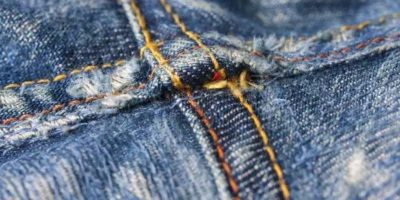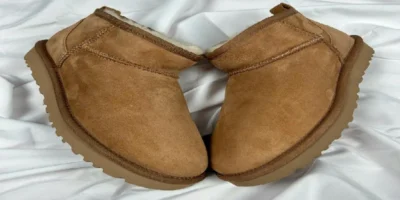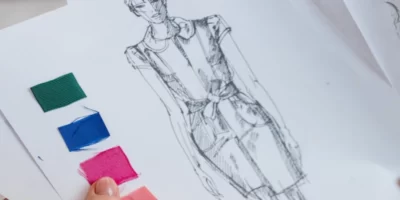What are the best ways to tell a fake or genuine Fendi bag? Our guide outlines the key clues so you are able to avoid the counterfeit Fendi bags.
Find more Fake Check guides, tips and advice
Find more fashion guides, tips and advice
The luxury house Fendi with a rich history has been creating exclusive, high-quality fashion, including handbags, since 1925. Countless Fendi It-Bags, such as the Fendi Baguette Bag or the Fendi Spy Bag, set the fashion scene in motion and still inspire bag lovers around the world. Fashion icons like Sarah Jessica Parker or Rihanna also appreciate their Fendi bags and keep showing you how best to style and combine them.
But what is in great demand and has become a symbol of luxury and good taste often has its price, which for most people is beyond the budget. Fendi has also become a victim of plagiarism and fake bags, which are often offered for less.
The quality of the imitators reaches a very broad spectrum – with some bags you can tell from a distance that it is not an original Fendi piece, as the material is peeling off and the brand name is misspelled, but with some you have to look very carefully to determine whether you have a real Fendi bag. After all, there is hardly anything more disappointing than spending a huge sum on a supposed designer bag, only to find out in retrospect that you have been the victim of a fake bad buy.
Top ways to tell a fake or genuine Fendi bag

Even if the models of Fendi bags differ greatly from one another, there are some features that they all have in common. You should always pay attention to this if you want to learn what distinguishes a Fendi original from plagiarism. We have summarized the most important:
THE CONSTRUCTION
If it is a very structured and stable model by Fendi, like the Fendi 2Jours Bag, you should make sure that the bag retains its shape as soon as you put it down. This is the first and probably the most noticeable feature of supposedly well counterfeit Fendi bags, as counterfeiters often don’t bother to process the bag in such high quality. The result: the bag buckles and takes on a sack-like shape. When it comes to size, you have to be meticulous so you can spot a fake vs genuine Fendi bag.
THE SIZE
Many models of Fendi bags are offered in several sizes, which is why it can be very helpful to know whether the present bag is or was produced in this size at all. Find out more about your dream model directly on the Fendi website or in boutiques.
THE MATERIALS
The material is also one of the first things to be inspected. Does the leather feel high quality and luxurious? Is it firm and steady? Rely on your feelings. If you think the leather is not real or of poor quality, often it is. Luxury brands and designer brands like Fendi always only use the best of the best and that is always immediately noticeable – anyone who has ever had a designer bag in their hand knows the difference to a cheap model. If you are still unsure, do the smell test. Neither the material nor the inside of the bag should smell of plastic, plastic or chemicals.
THE INTERIOR
Unfortunately, there is no rule of thumb how the inner workings of a Fendi bag should look. This can vary depending on the model and year. So it is best to find out directly on the Fendi website or in a Fendi boutique what the interior of the Fendi bag of your choice looks like and whether there are any deviations, especially with older vintage models.
In general, however, the inner lining should never crackle, feel stiff or plastic, or be attached too loosely or too tightly to the bag. If your model comes with a logo-studded lining, it should meet Fendi standards and not be crooked, uneven or badly set.
THE STITCHING
The devil is in the detail – a supposedly real designer bag often looks high-quality and classy, but a closer look reveals that the seams are crooked, not even or do not run parallel to the edges of the bag. So it is best to look at all the seams, both outside and inside. The seams on the handles should also be perfect to the millimeter. A mishap would not go away with real Fendi bags.
THE HARDWARE
It is not easy to set basic rules for inspecting Fendi bag hardware as it varies from model to model. In general, one can only say that the quality of the hardware must always be excellent and should always feel a little heavier. High-quality material weighs more than cheap plastic parts or metal imitations.
If a logo closure is to be found, as on the Fendi Baguette Bag, it should always be absolutely symmetrical and the “arms” of the “F” s should not reach the middle. There should always be a “FENDI” engraving on the sides. With the Fendi Spy Bag, for example, it comes down to the “secret compartments” – particular attention should be paid to the hardware.
The top of the clasp should have a clear, beveled glass stone. The shape of the coin compartment should be fastened with flat head screws and have a two-piece hinge. The braided parts on the handle and the clasp should also be examined carefully – many fakes neglect the detail that the braids should go very far to the edges and should be braided absolutely tight.
The later models like the Fendi 2Jours or the Fendi 3Jours bag have metal rails at the opening in the front of the bag. In the case of a Fendi Original, these should be fastened with four hexagonal screws. that the braids should go very far to the edges and should be braided absolutely tight. In the case of a Fendi Original, these should be fastened with four hexagonal screws.
SERIAL NUMBER
All Fendi bags made after the 1980s have a serial number. It is embossed into the lining of the inside of the bag or on a separate piece of leather that has been sewn onto the lining of the bag, or under the label inside the bag. The label inside should read “FENDI Made in Italy”. In total, the serial number of Fendi bags consists of 15 to 17 digits, with the middle part being the Art Number. This type number should be identical to the one on the attached authenticity card, so you should check this to identigy a fake or genuine Fendi bag.
THE HOLOGRAM
New models of Fendi bags (from around 2004) have a hologram which should be attached to a fabric tag. Make sure that there are a large number of holographic effects and lots of details, as many well-made fakes can own this sticker.
DUST BAG AND AUTHENTICITY CARD
A real Fendi bag always comes with a dust bag – so if you buy it second hand, it’s a good sign if the previous owner can deliver one. But still make sure that the material of the dust bag feels robust and that the logo print is balanced and straight.
There is no regulation as to whether or not a box is included with a new purchase. Sometimes you get one, sometimes not – an absence from a box is by no means a cause for concern. However, you should always ask for the authenticity card – now no Fendi bag comes without it. Then compare the number on the authenticity card with the serial number inside the bag. Just keep in mind that serial numbers and authenticity papers are pretty easy to forge,
THE PRICE
Everyone knows the initial optimism when you stumble upon an absolutely unbelievable price. But this is precisely where you should always be critical and consider whether such a price for the pocket model of your choice is even realistic. Why would someone sell a Fendi bag for a fraction of what you could get? So always find out about the new price of the bag and compare prices of second hand offers of your model if you are considering a second hand purchase. After all, when it comes to the price of designer bags, the following unfortunately applies: If it’s too good to be true, it is.
THE SELLER
In principle, only rely on authenticated sellers and online shops. When buying a new one, it is best to go to the official Fendi website or boutique or shop on well-known websites such as net-a-porter or mytheresa.




